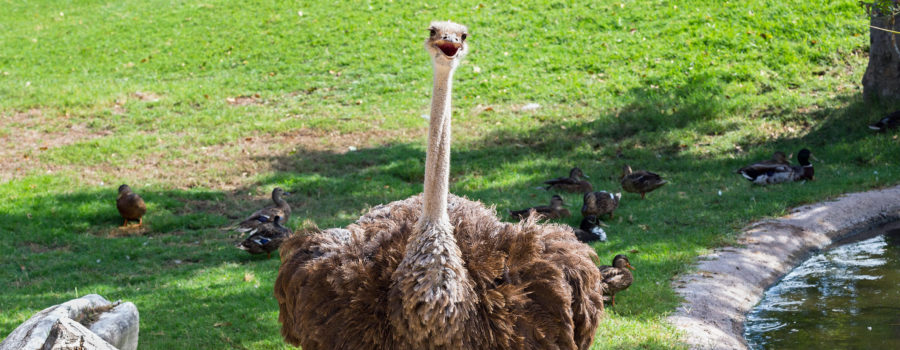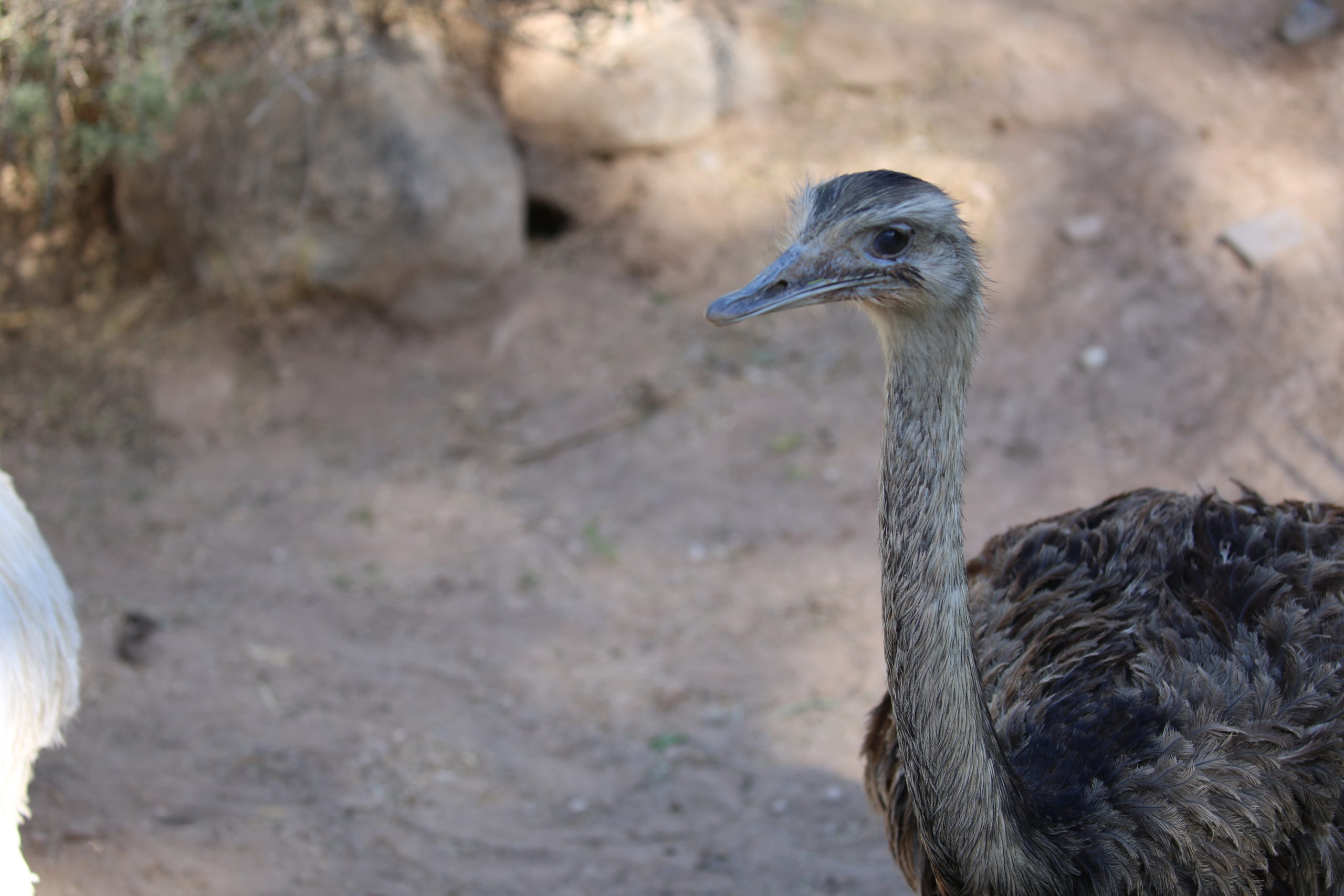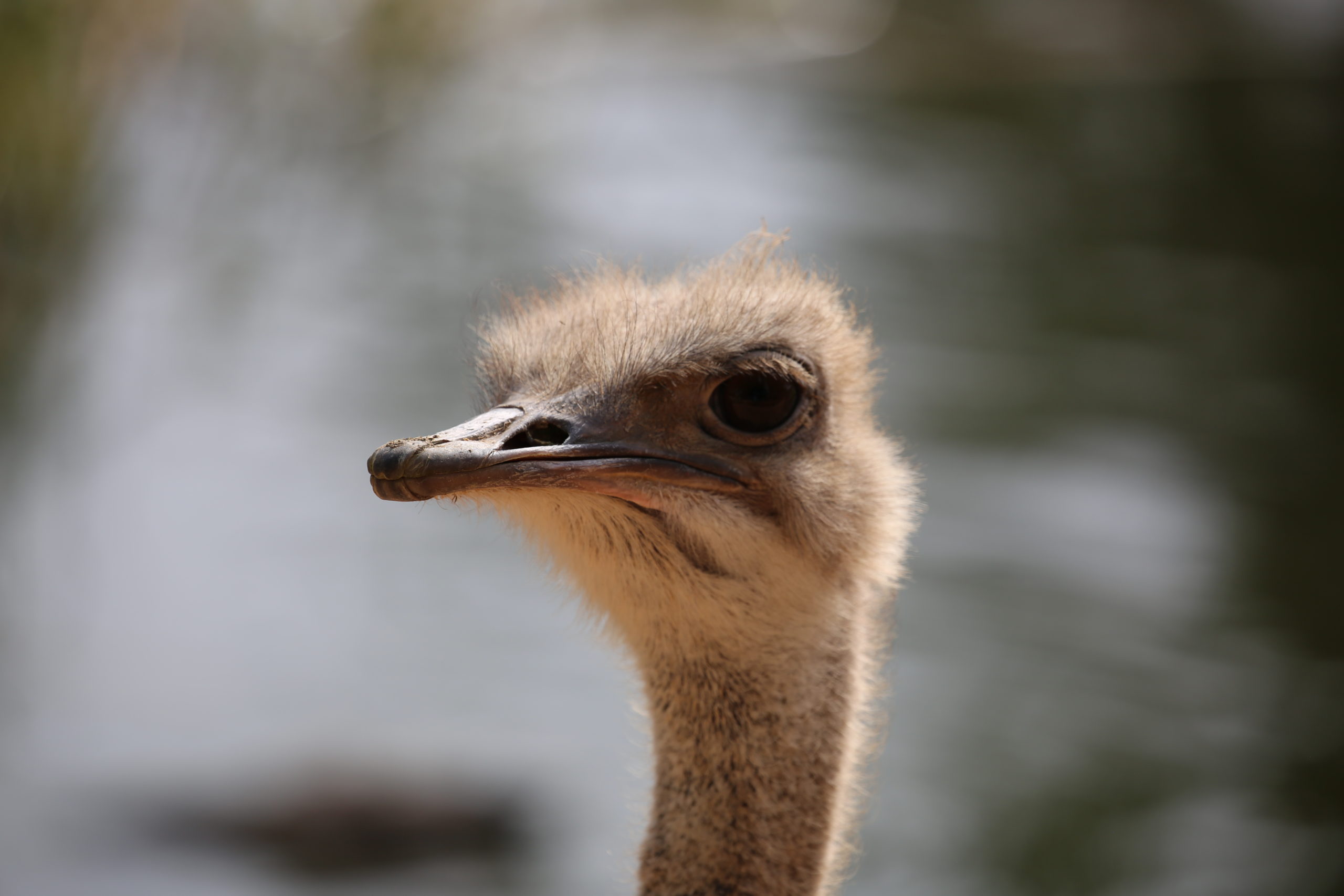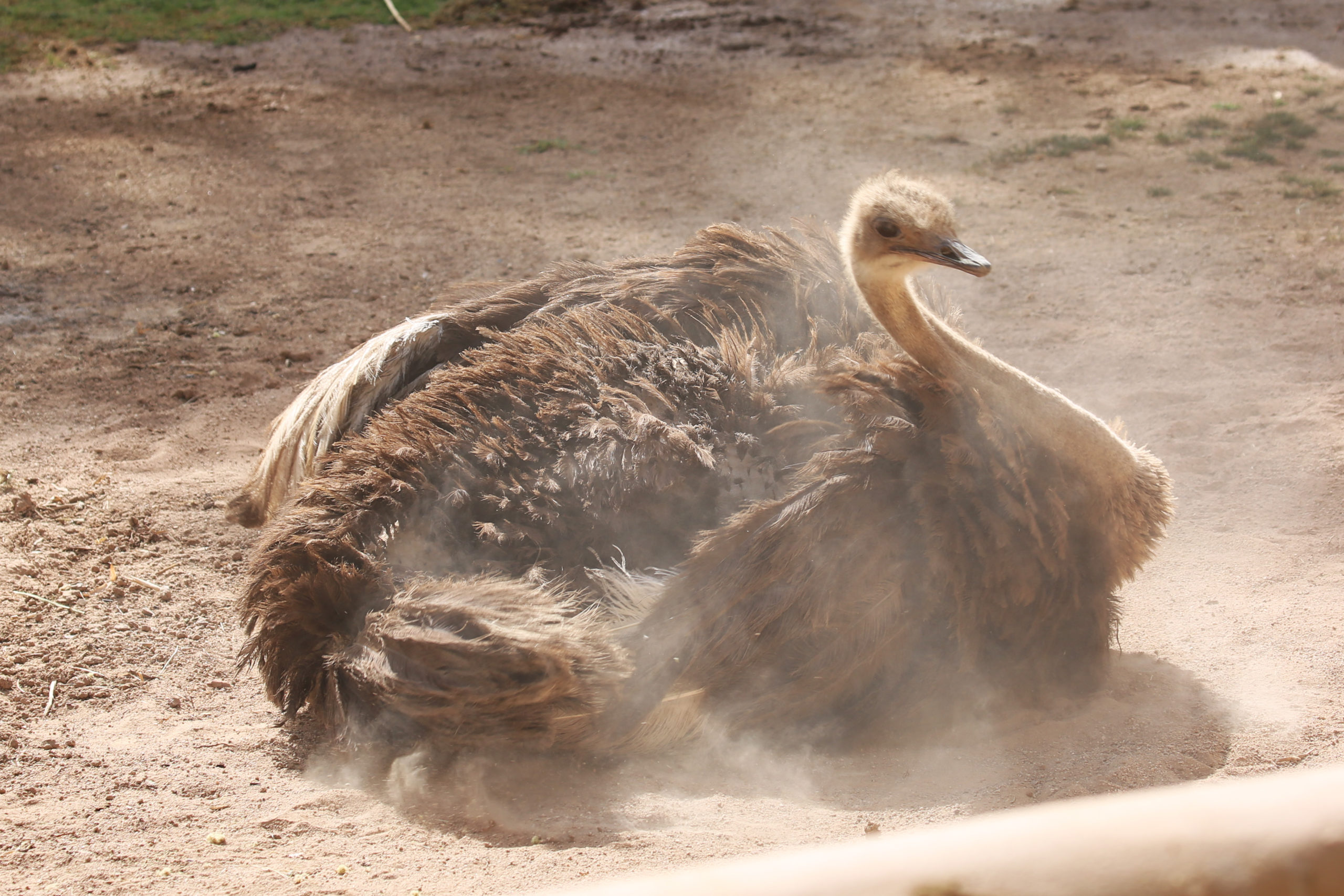Ostriches are the world’s largest and heaviest bird species. As a member of the “ratite” family, a term coined for flightless birds, these birds have unproportionally, small wings for their body size, which they use for behavioral displays and balance. Their necks are long, slender, and lightly feathered with a dusty, gray color—perfect for periscoping in the African savanna. The rest of their body has feathers of a darker grayish-brown for the female, and a starkly contrasting black and white plumage for the male. Their legs are long and powerful and they are the only bird species to have just two toes on each foot.
Diet: Ostriches primarily eat seeds, roots, leaves, and other plant material; however, when necessary, they will incorporate insects, small reptiles, and even rodents into their diet. Ostriches, like many other bird species, need to eat sand and stones in order to help grind up tough food items in a special stomach-like organ called the gizzard. Ostriches do not need to drink water; they get the water they need through the plant material they ingest. This is a highly valuable adaptation for a species in the hot and dry African savanna. However, if they come across a watering hole, they will not hesitate to take a drink.
In the Wild: These birds live in small groups, with usually no more than a dozen individuals. Since they lack the ability to fly, they are instead highly successful runners, reaching speeds up to 40 mph. The median life expectancy for an ostrich is 10.6 years.
Conservation issues/actions: Ostriches were highly prized, marketed, and even commercially farmed for their feathers. By the early 20th century, ostrich plumes were the fourth most exported product from South Africa, next to gold, diamonds, and wool. After the year 1913, the ostrich feather market shockingly bottomed-out due to the invention of the car; the open-roofed cars would blow ostrich feathers off of women’s hats, making the feathers a poor fashion choice. Today, while populations are not threatened, the ostrich population in the wild is declining due to habitat loss and illegal trade, thus requiring strict protection and farming to conserve the remaining wild populations. Efforts to stand up against illegal wildlife trading, as well as shopping sustainably, help protect wild ostrich populations.
At the Zoo:
You might see our ostriches eating dirt and small rocks. Don’t worry—this helps them digest their food. During warm weather, these birds often enjoy a cool shower given by their keepers.




